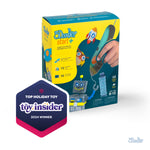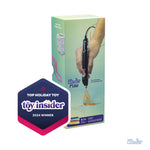3Doodler’s line of 3D printing pens make it easier than ever to start designing with just a few simple steps, but the real key is learning tips and tricks to use the pen to its full advantage.
It can be challenging to go from a simple idea on paper to creating a 3D shape. We’ve rounded up a few of our favorite tried and true methods for creating in 3D. Design tips for anything you may dream up!

The Perfect Pen Stroke
Whether writing with a traditional pen or a 3D pen there really isn’t a perfect stroke. It’s all about the style that you’re looking to achieve. Strong and bold. Light and airy. With a few simple tweaks you can get just the right finish. In fact, with a 3Doodler 3D printing pen you will want to test out your style. Check the pen speed. The height from the surface you are writing on. And, even the direction you write while using the pen. Take a look and see what a difference it can make to push or pull the pen with this tip as you create in 3D!

Plan Ahead
Rome wasn’t built in a day, and your 3D structure likely won’t be either! It’s important to plan ahead to the extent that you can. The 3Doodler team follows this critical step too with designs like the Brooklyn Bridge, Eiffel Tower, and even a pretzel. Start by drawing what it is you would like to create. Then, see if you can break it down into smaller elements. Having a clear plan or blueprint could be the ticket to success. Check it out!

Finishing Touch
There’s a certain amount of detail in every design that makes it truly unique and eye-catching. Perhaps you ran out of a favorite color filament or need a small amount of color in a few areas. Consider using acrylic paint to make these quick adjustments and create custom details. You’ll be surprised to see how a little paint can go a long way to finishing off your design to great effect. See how you can use paint as a finishing touch.
Patience and Persistence
Professional 3Doodler artists also have their share of quick tips to share with those new to doodling. Their advice often comes down to two things — patience and persistence. Trying different techniques and enjoying the journey is all part of the experience. “Don’t forget you can cut off or meltdown your mistakes,” points out Rachel Goldsmith, a New York and Seattle based artist.












